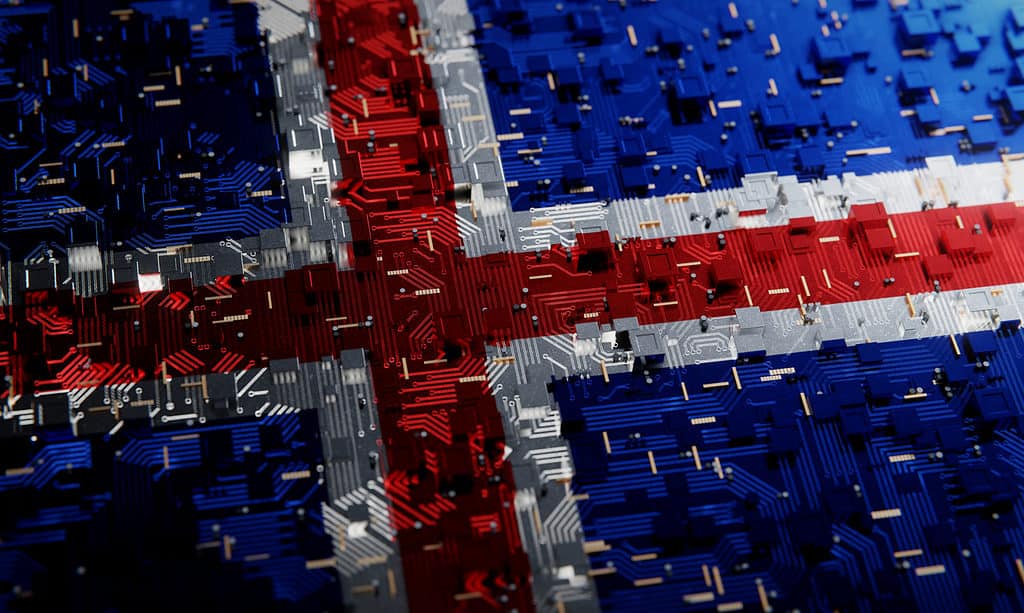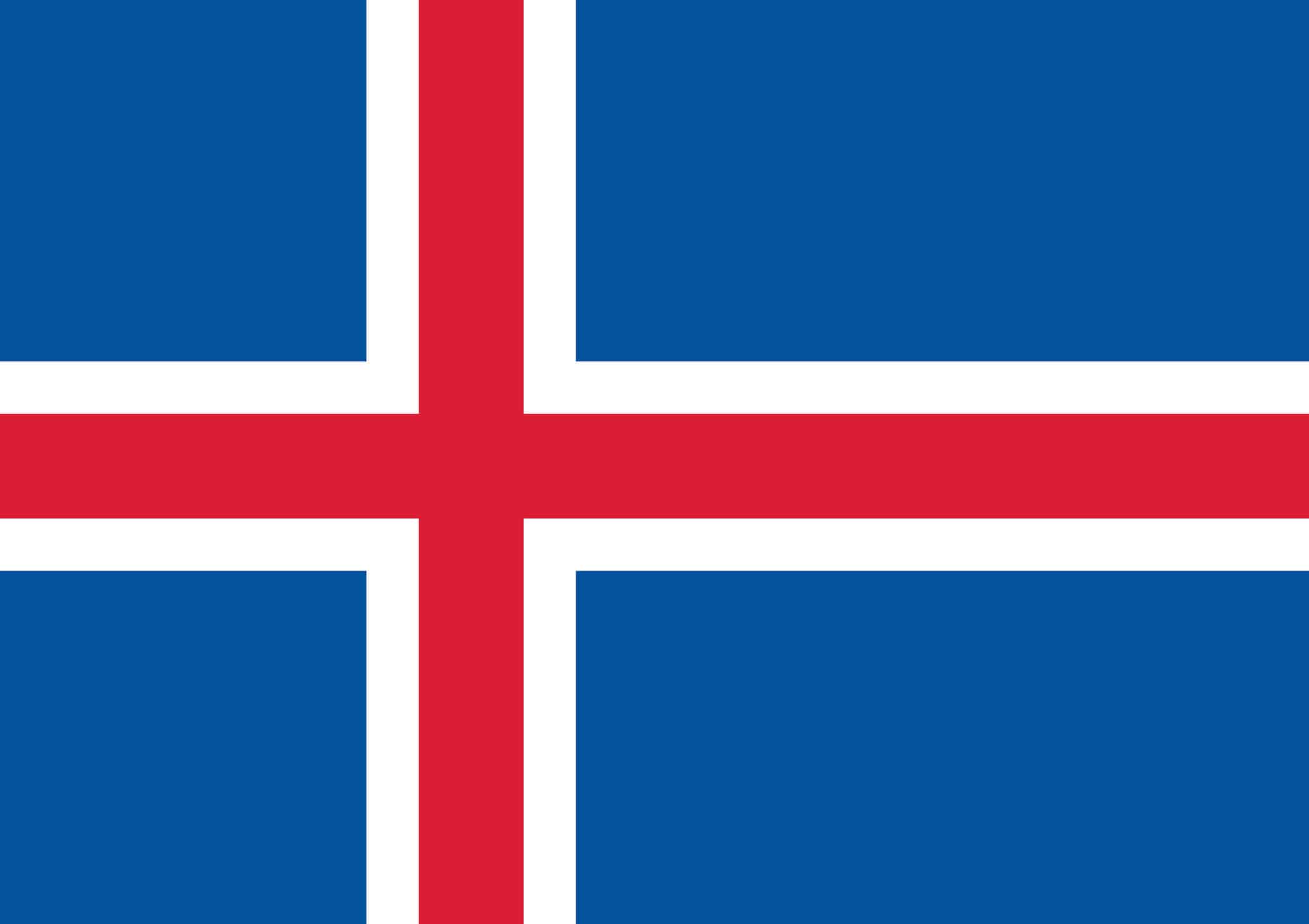Iceland’s flag: History, meaning and symbolism
Iceland, commonly known as the volcanic island, is a country located on an island halfway between North America and Europe. Unlike other countries, Iceland does not have borders with any country. However, its closest neighbors are Norway, Greenlandand Britain.
Due to its strategic location, south of Arctic Circle, this country experiences a lot of volcanic activity. There are reportedly 30 active volcanic systems in the country and 13 have erupted since Iceland was created.
This nation covers an area of 103,000 km² (39,769 sq mi), making it twice the size of Denmark and almost the same as Kentucky, a state in the United States. In 2022, Iceland will have about 347,000 people, which makes the country the least populated in Europe. Reykjavík is the capital of Iceland as well as the largest, and Icelandic is one of the country’s spoken languages.
Foundation of Iceland
There are several claims that the first settlers in Iceland were actually Irish monks. However, these people did not last long in the country and left almost as soon as they arrived. While some claim that the monks left because of the harsh weather, others claim that their dislike of pagan visitors made them leave. However, the monks left enough artifacts to prove that they once inhabited the island.
Therefore, the first official settlers were Vikings who left their country due to social and political unrest in the British Isles and Norway. Flόki Vigerðarson, one of the emigrants, came to the island together with other Scandinavians and named the country Ísland, otherwise known as Íslandið or Ísland. However, Ingόflur Arnarson, a Norwegian ruler, came to Iceland in 871 and became the first permanent settler in the country. He founded the town of Reykjavík, which is called the capital of Iceland today.
As the country’s population increased, a more organized system of government and administration was needed. Therefore, in 930, Alþingi also called the Icelanders Alþingi, was founded, making it one of the oldest parliaments in the world. This assembly convened every year in The national park at Þingvellirwhere they made important decisions affecting the state.
Unfortunately, the parliament began to lose control in the 11th and 12th centuries due to power struggles between different dynasties. In addition, a eruption in 1104 the country went to ruin, as well as Black Death who attacked the country. Since King Hákon of Norway saw this chaos as an opportunity, he took over Iceland in 1281 and included it in his kingdom. After Norway and Denmark became one under the Kalmar Union in 1397, Iceland became part of the Danish kingdom until the 20th century.
In the 19th century, more Europeans were becoming more sensitive to freedom and this encouraged the Icelanders, led by Jόn Sigurðsson, to demand freedom. Finally, in 1874, Iceland was able to draw up its first constitution and have authority over domestic affairs. Political parties were also formed and urban development began in earnest.
Yet Iceland faced many other problems, such as volcanic eruptions and The First World War, which made it difficult for them to gain the complete independence they desired. There were also demographic and economic problems as many citizens left the country for greener pastures. Then the British army invaded Iceland in 1940 and soon after the American army came to occupy the country. This led to a decrease in unemployment and a significant increase in the economy, finally leading to Iceland’s independence on June 17, 1944.
Iceland currently has one of the strongest economies in the world, with extremely low unemployment.
Characteristics of Iceland
Iceland is a highland with ice fields, mountain peaks and an abundance of hot springs, fjords, waterfalls and glaciers. About 11% of the population is covered by glacial ice and cold lava beds with water surrounding the area. Although you might expect the place to be freezing cold, Iceland has a temperate climate thanks to it Gulf stream which heats up the country.
As the country is volcanic, Iceland gets most of its electricity from geothermal reserves and hydropower. As one of the most geologically active places on earth, Iceland welcomes many tourists every year who love to see nature’s creative works.
The official language is Icelandic, but English, German and Nordic languages are secondary languages.
The history of the Icelandic flag
©iStock.com/EA
Jorgen Jorgensen introduced the first Icelandic national flag when he ruled the country. The background was blue and had three codfish in the top left corner. Although it was considered a strange flag, it was still adopted in 1809. Unfortunately, the presence of this flag was short-lived as Jorgen did not rule Iceland for long.
Subsequently, Sigurður Guðmundsson presented another flag in 1870 with a bright blue background and a white falcon in its center. The falcon presumably represented the Icelandic nation and its movement towards independence. It was accepted by the Danish government and became the official flag of Iceland at that time.
Then a new flag design was seen in 1896, designed by Einar Benediktsson, then a well-known poet in Iceland. The flag had a dark blue field with a white cross on top — much closer to the design of the current Icelandic flag. For the poet, white and blue represented the snow and the mountain, and they can still be seen in the National Museum of Iceland.
Matthías Þórðarson proposed the design of the current flag at a student council meeting in 1906. The flag was quickly adopted and was unofficially adopted in 1913. Its official adoption took place on June 19, 1915. Matthías designed the flag with a lighter blue color, which was changed to the current blue color in 1944 when Iceland finally gained complete independence.
The symbols of the Icelandic flag

©iStock.com/HT Ganzo
The Icelandic flag played an important role in the country’s struggle for independence and is one of the country’s most respected symbols. The flag is red, blue and white, with a Scandinavian cross occupying the center of the flag. This cross signifies that the flag is aligned with other Nordic flags.
Icelanders say that blue represents the country’s mountains, red represents the island’s volcanoes, and white represents snow and glaciers. However, some would say that the color red was added to the flag to represent Christianity, although this is not a popular opinion.



